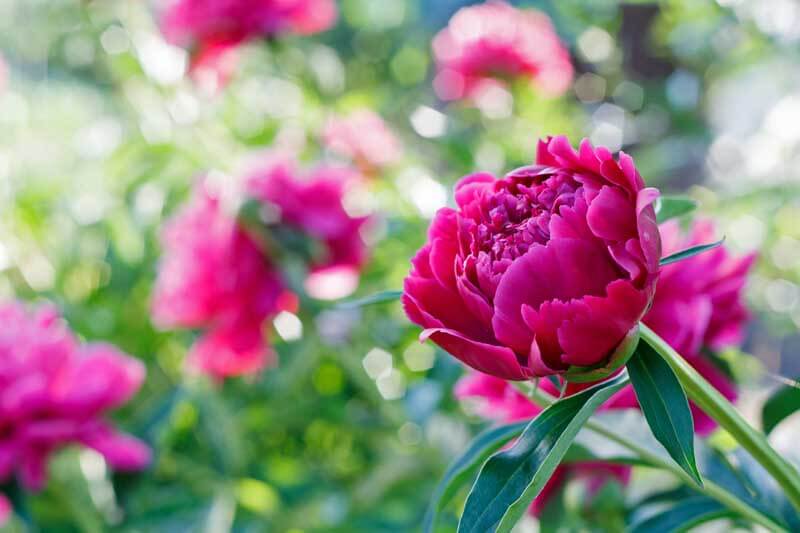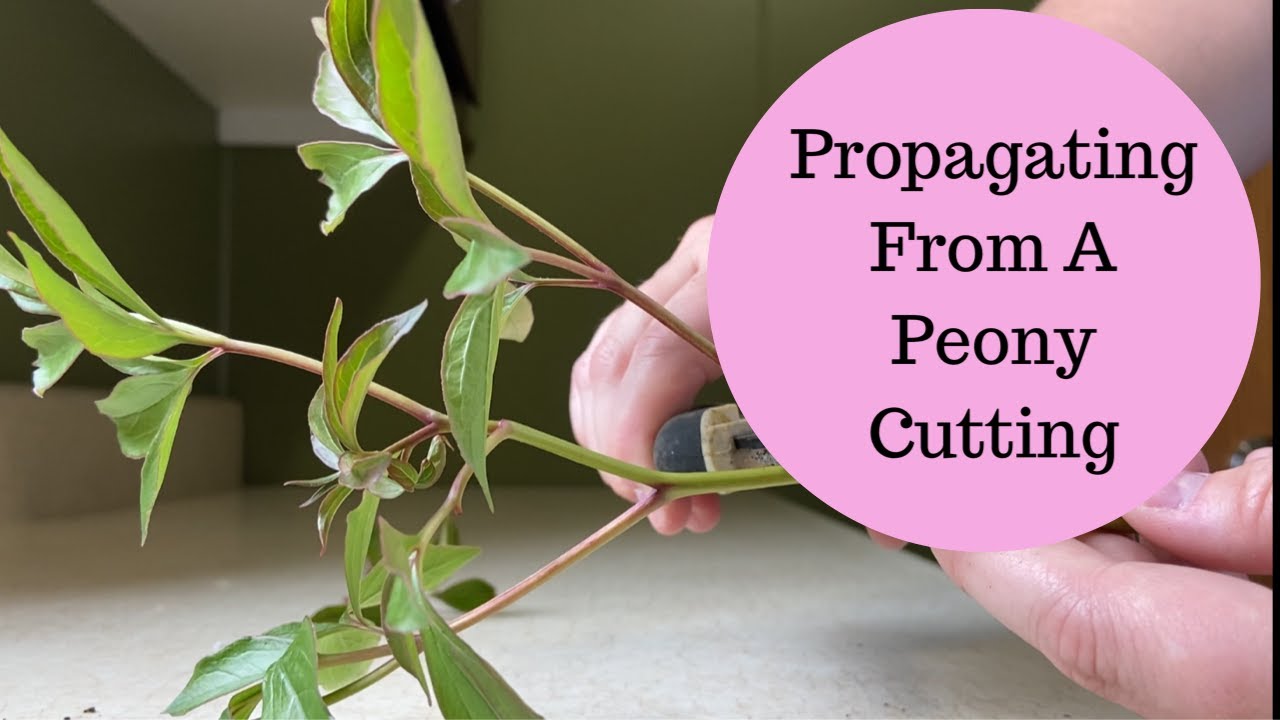 “How do you harvest and grow peony seeds?” Question from Mark of Barrie, Ontario, Canada
“How do you harvest and grow peony seeds?” Question from Mark of Barrie, Ontario, Canada
If your peonies were able to cross-pollinate and make seeds that can be made to grow, the plants will produce seed pods in late summer or early fall that should contain fully mature seeds. The round, tough seeds should be harvested as soon as the pods open and begin to turn brown. The seeds will be dark brown to black.
Peonies are prized for their lush, romantic blooms that come in shades of white, pink, red, and yellow. These perennial plants can live over 100 years. If you want to grow your own peonies from seed, you may wonder if you can get seeds from store-bought cut peony flowers.
The answer is yes – with some planning and patience you can harvest viable peony seeds from cut flower stems. Here’s what you need to know.
Can You Get Seeds from Store-Bought Peonies?
Most cut peony stems you find at the grocery store or florist were not pollinated, so they won’t produce seed pods. However, if you purchase peonies from a local flower farm or nursery that grows their own blooms, they may have intact seed pods
When buying cut peonies, look closely at the spent blooms. If you see green, rounded seed pods starting to form, there’s a good chance they contain viable seeds. The key is finding peonies that were pollinated in the field, not greenhouse-grown.
How Peony Seeds Form
Peonies produce seeded pods only if pollination occurred. This happens when bees and other pollinators spread pollen from one peony bloom to another. Each peony plant has male and female parts. When pollen reaches the female ovary, it fertilizes the ovules. Seeds then develop.
Green seed pods become visible a few weeks after the flowers fade. Left on the plant all summer, the pods swell and turn brown, splitting open in fall to reveal shiny black seeds.
Harvesting Seeds from Cut Stems
If the cut peony stems you purchased have young, green seed pods, here’s how to proceed:
-
Trim the bottom of the stems and place them in a vase of water.
-
Set in a bright spot out of direct sun. Change the water every 2-3 days.
-
In about 6-8 weeks, the seed pods will mature and turn brown.
-
Monitor the pods daily and collect when they split open. Seeds fall out quickly once the pods crack.
-
Place seeds in an envelope or jar labeled with the peony variety (if known).
With extra care, you can coax cut stems to produce ripe seeds for planting. Note that the resulting plants will be unique, not identical to the parent.
Growing Peonies from Seed Pods
Peony seeds have a hard outer coat that leads to uneven, sporadic germination. Here are a few tricks to improve your chances:
-
Soak seeds in water for 1-2 days before planting. Change the water daily. This slightly softens the seed coat.
-
Gently scratch or nick the seed with a nail file before planting. Don’t damage the embryo inside but allow moisture to penetrate.
-
Start seeds indoors in late winter. Press into seed starting mix without burying too deep.
-
Maintain a temperature of 65°F to 70°F for germination.
-
Once sprouted, move to a sunny spot. Transplant seedlings outdoors in fall.
-
Allow at least 3-5 years for plants to mature and flower.
With extra time and patience, you can enjoy free peonies grown from the seeds of cut flowers. Just be sure to leave some pods intact on your own plants come fall for future seed saving.
Where to Find Peony Seeds
Beyond harvesting from spent blooms, a few good sources for buying peony seeds include:
-
Local nurseries – Ask if they collect and sell seeds of their peony varieties. This allows you to grow types suited to your climate.
-
Online specialty nurseries – Reputable peony growers like Cricket Hill Garden and Adelman Peony Gardens offer seeds of unique peony varieties.
-
Seed catalogs – Companies like Swallowtail Garden Seeds sell individual peony seeds or mixes.
-
Seed swaps – Connect with other gardeners via seed exchanges and club meetings to obtain peony seeds.
Growing peonies from seed takes time and dedication. But the reward of free, unique plants makes it a fun project for patient gardeners.
Caring for Peonies Grown from Seed
Peonies started from seed need a period of growth before flowering. Here are some care tips:
-
Pot up seedlings and grow in containers for the first year. Transplant to the garden in fall.
-
Choose a sunny spot with well-drained soil. Amend clay soil with compost to improve drainage.
-
Young plants need 1-2 inches of water weekly for the first year. Established peonies are quite drought-tolerant.
-
Apply a balanced organic fertilizer or compost in early spring. Avoid high-nitrogen mixes that promote foliage over flowers.
-
Remove spent blooms after flowering but leave at least one seedpod intact on each plant for seed saving.
-
In fall, cut back plants by half and mulch with leaves or straw to protect crowns from winter damage.
-
Divide mature plants every 3-5 years to promote flowering. Replant the divisions elsewhere or share with gardening friends.
With proper care, patient gardeners can nurture peony seedlings into gorgeous, long-lived perennial plants. And saving seeds annually provides an endless supply of fresh flowers.
Common Problems With Peonies
Growing peonies from seedlings requires diligence to prevent issues like:
-
Failure to flower – It takes 3-5 years for seedlings to bloom. Lack of sun, overfertilizing, or excessive pruning can also prevent flowering.
-
Ant damage – Ants feed on peony buds and can prevent flower opening. Control them by pruning away nearby plants ants climb from.
-
Fungal diseases – Botrytis blight and powdery mildew cause spots, yellowing, or dieback. Improve airflow and avoid overhead watering.
-
Chewing insect pests – Japanese beetles, earwigs, and other pests feed on leaves and buds. Pick off by hand or use insecticidal soap sprays.
-
Viral infections – Ringspots and mosaic viruses cause mottled leaves. Destroy and replace infected plants. Start with virus-free seeds or divisions.
Providing ideal growing conditions gives peonies their best shot at staying healthy and producing abundant blooms year after year. Be diligent about pruning, watering, and monitoring for problems.
Enjoying Peonies in the Garden
Peonies grown from seed offer mystery and uniqueness – no two will turn out exactly alike. As they mature, enjoy their changing form:
-
Year 1 – Single stems with ferny, divided leaves. Grow in containers or nursery bed.
-
Year 2 – Bushy clumps of foliage establish. Transplant to garden in fall.
-
Year 3 – Larger plants with sturdy stems but no flowers yet.
-
Year 4 – Buds appear in spring! Flowers may be single or semi-double.
-
Year 5 – Plants finally reveal their mature size and flower form.
-
Beyond – Mature plants provide lush foliage and abundant blooms for decades to come. Dig and divide every few years.
The journey from tiny peony seed to glorious garden specimen takes several seasons. But caring for your homegrown plants is extremely rewarding. The savings on buying new plants each year is just an added bonus!
Enjoying Peonies as Cut Flowers
Beyond adding charm to borders and beds, peonies make exceptional cut flowers. Their lush, romantic blooms fill any vase with beauty and fragrance. Here are some tips for cutting and arranging peonies:
-
Harvest flowers in early morning while still in tight bud.
-
Use a sharp knife or garden shears to cut stems at an angle.
-
Immediately place in water – peonies bruise easily when handling.
-
Remove lower foliage that would sit below the waterline.
-
Recut stems by 2 inches every few days to prolong vase life.
-
Display peony stems alone or add filler greenery like ferns or ivy.
-
Pair different colored peonies like white, pink, and red for stunning contrast.
Cut peonies add old-fashioned romance to any room. And collecting seeds from garden plants means you can grow an endless bounty of flowers for arrangements year after year.
The Takeaway
While not always successful, collecting seeds from store-bought cut peonies can be an adventure for DIY gardeners. A bit of effort yields free plants, and growing peonies from seeds or divisions saves money versus buying new each season. Be sure to leave some spent blooms intact on your own plants in fall to gather fresh seeds annually. With proper care, homegrown peonies will flourish for years, providing armloads of fragrant cut flowers.
Growing Peonies From Seed Collecting, Germinating and Growing to Maturity
FAQ
How do you harvest peony seeds from cut flowers?
Can you grow peonies from cut flowers?
Can you plant peony seeds from the flower?
How do you propagate peonies from flowers?
- The Ultimate Guide to Growing Strawberries in Raised Beds - August 8, 2025
- No-Dig Garden Beds: The Easiest Way to Grow a Beautiful Garden - August 6, 2025
- How to Protect and Preserve Wood for Raised Garden Beds - August 6, 2025

